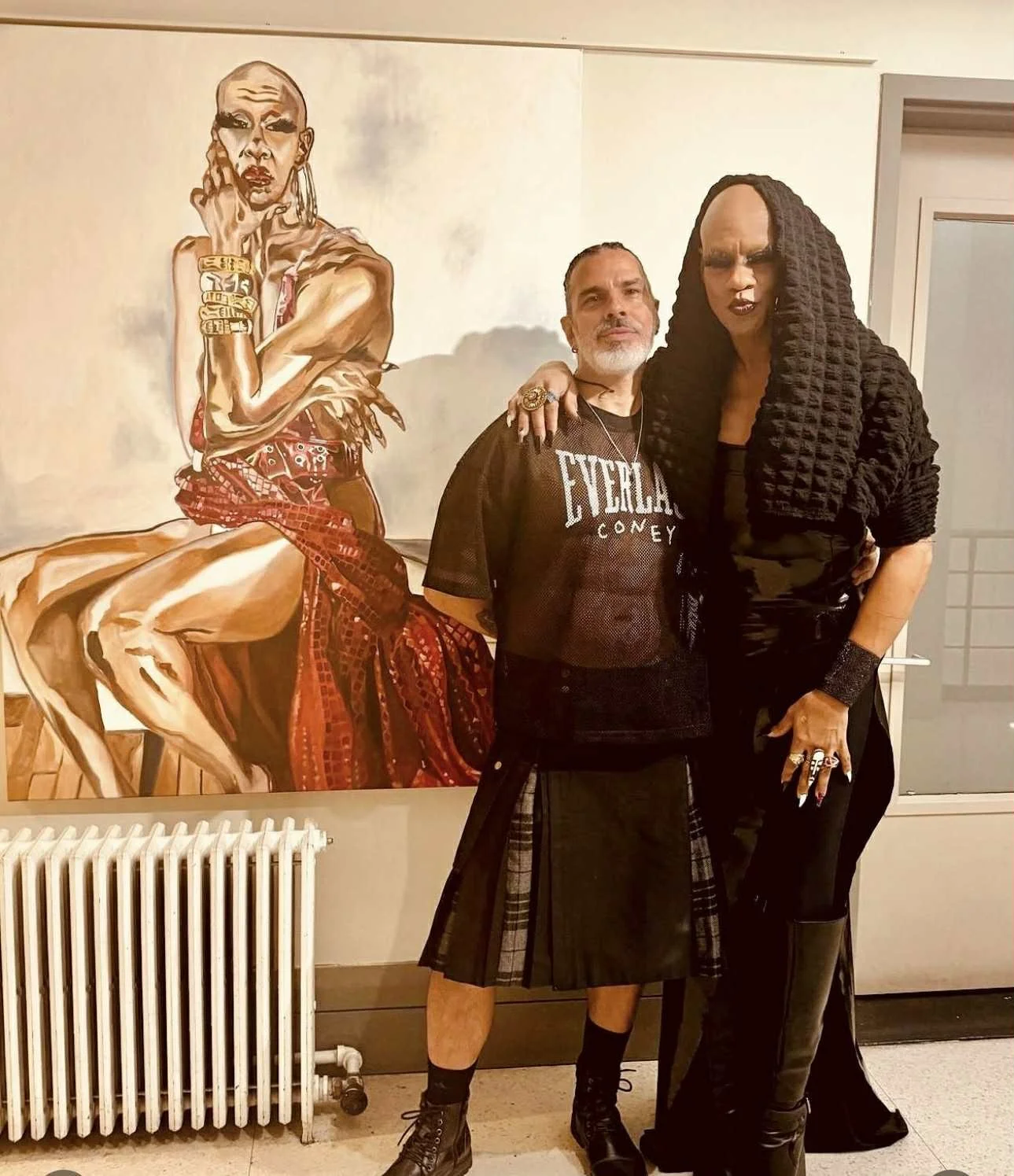Framework for Grad Dialogue
Peter Lopez and Syowia Kyamb
In her article, “Autonomy and the Archive in America”, director and curator, Lauri Firstenberg, discusses ways in which the contemporary artist works with archives. Firstenberg describes the process of many artists working with archives as the artists attempting to “unearth narratives” and “min[ing the archives] for visual material and conceptual strategies” (313). This is the work that I am attempting with the project I have titled, “Her Family Album”.
“Her Family Album” is a body of work that consists of eleven paintings that use the family-album-as-archive and using that archive as its source material. In this work my goal is to restage photographs from a photo album gifted to me by my mother (and carefully curated by my mother) when I was eighteen years old before she would leave me in New York so that she could live in Florida. The visual material I am lifting from the album are images of myself as a child, my sister, my mother and my grandmother. In each of the eleven renderings of the visual material I have selected, I am inserting symbols (demons, animals, bodies) that seek to recalibrate the image of the happy family photo in order to represent something closer to the true experience of my childhood memories: memories steeped in sexual abuse and tinged with the weight of being the direct descendant of a Nazi soldier.
The concept for the work is how the individual memory can establish dominance over the power of the public archive.
Thematically, in the performance titled, “Kaspale’s Playground”, Syowia Kyambi is similarly working through the concept of how archives serve to domesticate the past and how memory can serve to thwart that domestication.
Syowia has created a trickster-specter called Kaspale who haunts archives (sometimes physically, sometimes from great distances) in order to establish the dominance of memory in places where archival interpretation serves to define those spaces in fairer, more benign terms than individual memory would have them defined.
Her latest work tackles the memory of an era and a facility; it is the memory of the twenty-four year rule of recently deceased President Daniel arap Moi of Kenya and the facility he used to torture dissidents in his attempts to consolidate power called Nyayo House. According German news organization, Deutsche Welle, the former president’s official funeral leaflet described Moi as "an icon, a legend and a philosopher.” This power of the archive to calcify impressions is what Syowia is speaking to and, through her performance with both a Kaspale mask and a Kaspale puppet, is attempting to surface and for lack of a better term (but one appropriate for the title of the work) to “play” with—or to play through.
In “Autonomy and the Archive”, Firestenberg lists a number of terms that one can use to name what it is that the contemporary artist is doing with archives; some of those terms are “self-framing, reobjectification, self-staging, refetishization, and reversal” (314).
Both “Her Family Album” and “Kapale’s Playground” seek to self-frame and reverse the archive in the cause of the struggle for the independent memory to not be drowned out by the archive’s attempt at creating a shared public memory whether that attempt be through the (re)writers of Kenyan history or through a parent struggling with a troubling past and a complex vision of motherhood.


